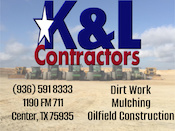
December 6, 2022 — Even though it’s the Christmas season, autumn is still here and leaves are continuing to fall across the state, building up and around our homes and yards.
Fallen leaves have many benefits to our ecosystem when left alone but can also become a wildfire hazard if they remain in the wrong places. Which creates the question, what should we do with fallen leaves?
The key to leaves around your home is finding the balance between removing and leaving them.
Embers are the leading cause of homes destroyed by wildfires, and embers can gather where leaves have fallen around your home. That’s why removing leaves on and near your home can help reduce your risk to wildfire.
According to Kari Hines, Texas A&M Forest Service Firewise Coordinator, homes should be cleared of fuel buildup, or debris, from zero to five feet away. Homeowners should also decrease the fuel buildup next to wooden attachments.
“Leaves should be removed from these first five feet, usually the gutters, the garden beds that touch the home and where leaves gather up against wooden fences and wooden decks,” said Hines. “If you choose to leave leaves in your yard, which we recommend, do so in a place that is not in one of these vulnerable locations.”
So, why keep leaves in your yard at all? Leaving leaves where they fall can provide the most benefit to your yard, trees and overall ecosystem.
“We recommend leaving leaves where they are because it mimics the forest and a natural setting,” said Matt Weaver, Texas A&M Forest Service Urban Forester. “If you look at the forest floor, it’s leaves. Over time, those leaves break down and become organic material and eventually the soil itself.”
This is especially important in urban settings, Weaver said.
“In urban areas, there are a lot of soil issues like compaction, and that organic material is actually really important for tree health,” said Weaver. “Most of the soil in urban areas is lacking organic materials and the only thing to help with that is mulch, which can be leaves.”
Leaves can be used as mulch to also insulate and protect the roots of trees and plants from cold weather.
“Leaves also provide food and shelter to many insects and organisms that help keep our soil healthy,” said Hines. “By leaving leaves, you are leaving the insects that are overwintering in that thermal protection layer, you’re returning organic material to your soil.”
If you want to reduce long-term yard maintenance while still providing some benefit to insects in your yard, you can use a mulching attachment to mulch the leaves in place soon after leaves fall, but don’t wait too long or you risk mulching the beneficial insects.
The smaller pieces will be less likely to blow away in the wind, while still offering some shelter to overwintering insects. The smaller pieces will also decompose easier, speeding up nutrient cycling and allowing your trees to use the nutrients quicker.
The other option, removing leaves completely, while less desirable, can be done by making a compost pile, burning or discarding of leaves in a biodegradable container. Composting leaves is a good way to cycle those nutrients back into the soil as it is a good natural fertilizer for gardens and flowerbeds.
If you choose to burn your leaves, use safe debris burning practices: keep your piles small, clear flammable materials away from your piles, follow all local burning restrictions and avoid burning on dry, windy days.
Though leaving leaves will require some work throughout the winter to keep windblown leaves from building up around your house, the benefits they provide are invaluable. Find the balance of leaves in your yard this season to help keep it safe from wildfires and provide environmental benefits.









